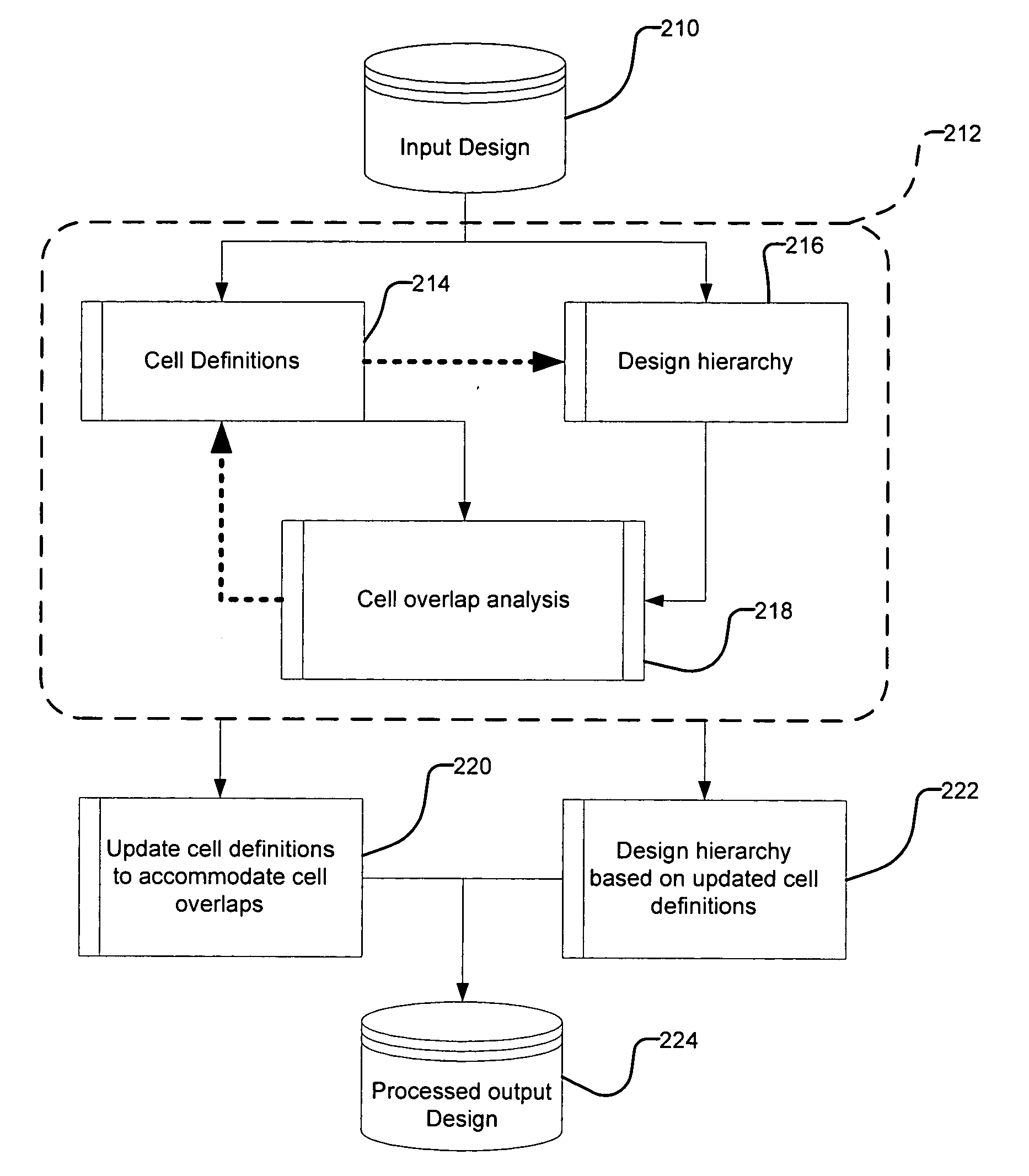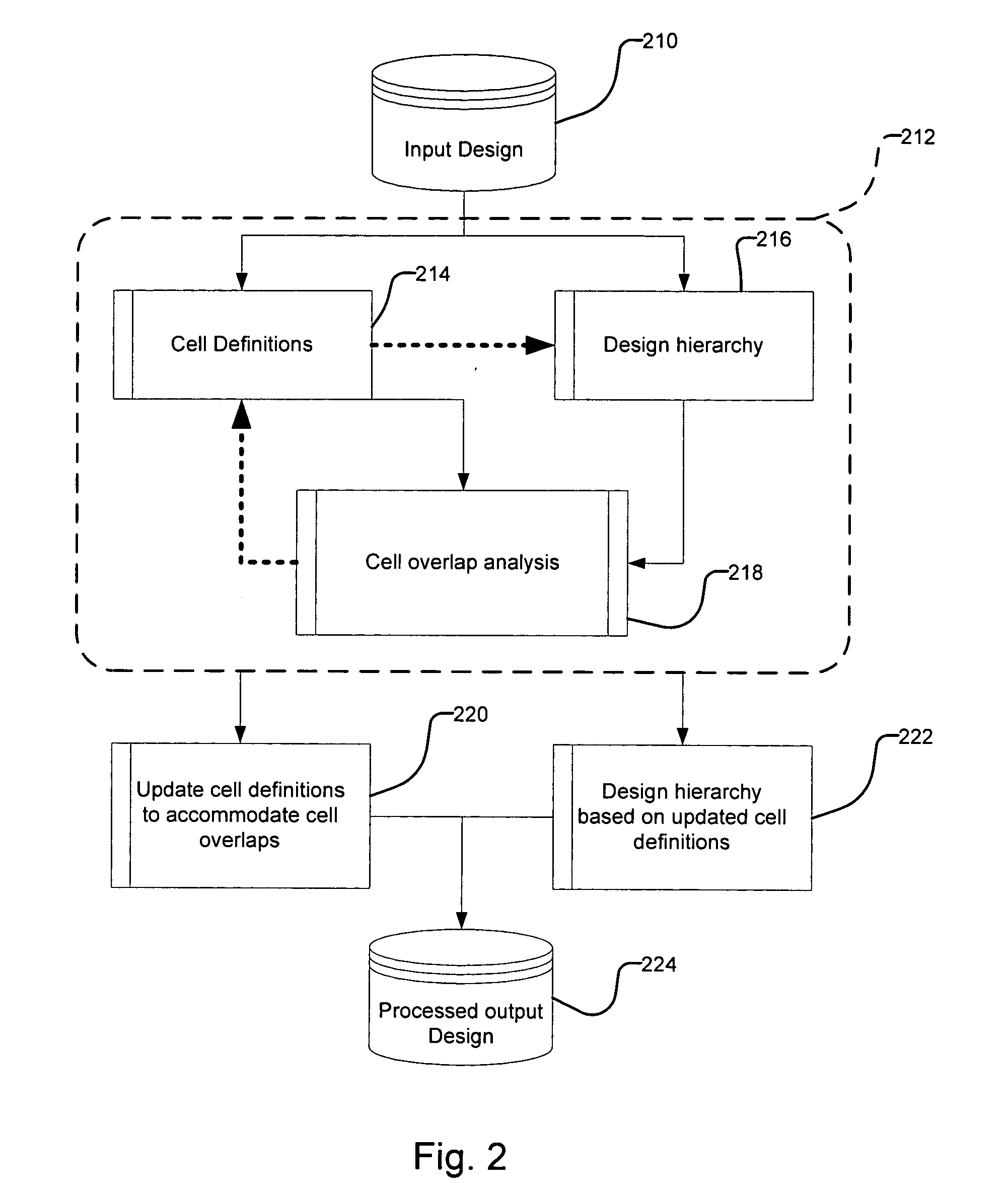Method and system for semiconductor design hierarchy analysis and transformation
a technology of design hierarchy and semiconductors, applied in the field of method and system for semiconductor design hierarchy analysis and transformation, can solve problems such as adding complexity to these methods
- Summary
- Abstract
- Description
- Claims
- Application Information
AI Technical Summary
Benefits of technology
Problems solved by technology
Method used
Image
Examples
Embodiment Construction
[0041]FIG. 1 illustrates the method for modifying cells in a hierarchical integrated circuit design that embodies principles of the present invention.
[0042] In more detail, processing begins at a node A in step 110. Initially this is the root node, which later become a current node as the process traverses the design.
[0043] In one embodiment, if there is no top cell, a common top cell is created and all cells are referenced into that top cell.
[0044] Next, in step 112, it is determined whether or not the node A is a leaf cell. A leaf cell has only polygons and no references to other cells.
[0045] If it is a leaf cell, then further processing is stopped in step 114.
[0046] If, however, the current node A is not a leaf cell, then it is determined whether or not any polygons are defined in node A in step 116.
[0047] If there are polygons, then a new cell(s) is created for these polygons and a reference is provided to this new cell within current node A in step 118. Typically, the num...
PUM
 Login to View More
Login to View More Abstract
Description
Claims
Application Information
 Login to View More
Login to View More - R&D
- Intellectual Property
- Life Sciences
- Materials
- Tech Scout
- Unparalleled Data Quality
- Higher Quality Content
- 60% Fewer Hallucinations
Browse by: Latest US Patents, China's latest patents, Technical Efficacy Thesaurus, Application Domain, Technology Topic, Popular Technical Reports.
© 2025 PatSnap. All rights reserved.Legal|Privacy policy|Modern Slavery Act Transparency Statement|Sitemap|About US| Contact US: help@patsnap.com



